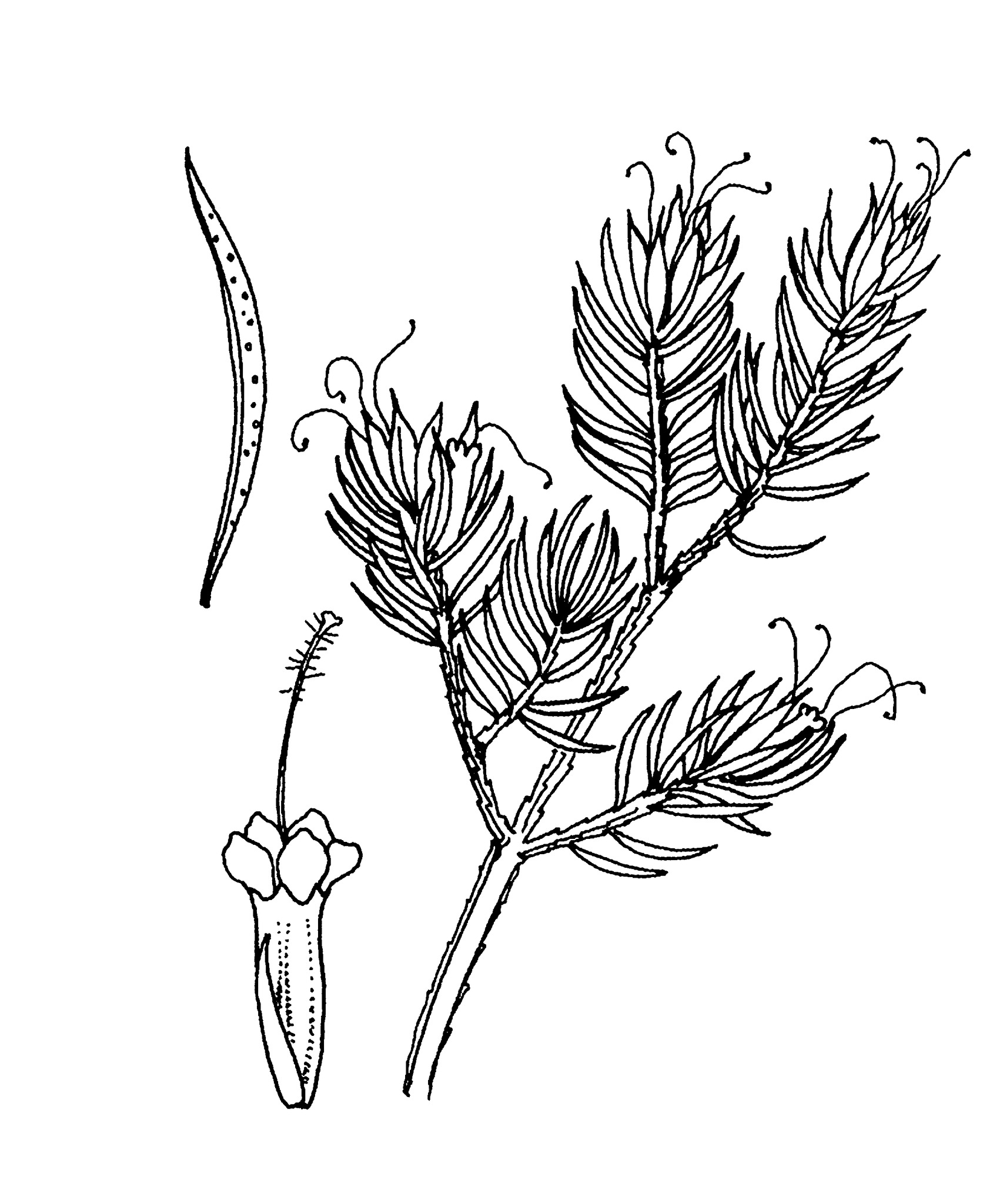
Commemorating Dr Erasmus Darwin (1731–1802), English physician and poet, grandfather of the great naturalist, Charles Darwin.
Small to medium-sized shrubs. Leaves mostly decussate, cylindrical or flattened, mostly aromatic. Flowers axillary in clusters towards the tips of the shoots and with prominent colourful bracts, 5-parted, bell-like or tubular. Sepals small and petal-like. Stamens 20, 10 fertile alternating with 10 sterile, the anthers opening by terminal pores. Ovary 1-chambered, with 2-4 ovules. Fruit indehiscent with 1 seed.
Grown for the often colourful bell-like flowers and aromatic foliage
About 45 species endemic to Australia.
Seed, cuttings or division.
Oils are extracted from some species and used in perfumery.
Ovules mostly 2-4, cf. Homoranthus and Verticordia. Flowers often bell-like with prominent colourful bracts; petals erect, shorter than the style; anthers opening by pores, not slits, cf. Chamelaucium.
Source: (2002). Myrtaceae. In: . Horticultural Flora of South-eastern Australia. Volume 3. Flowering plants. Dicotyledons. Part 2. The identification of garden and cultivated plants. University of New South Wales Press.
